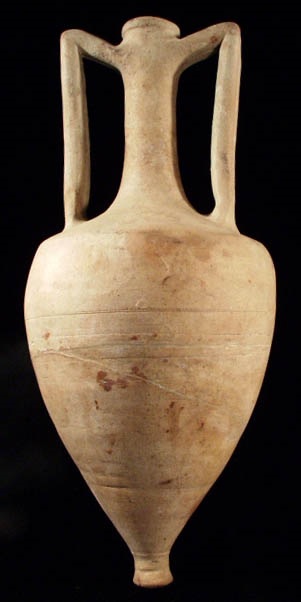
During the fifth through third centuries BCE, the Mediterranean and Black seas were major thoroughfares for ships loaded with thousands of amphorae, thought from their shape to contain wine. But only recently have researchers peered through the lens of 21st century genetics to identify the actual remnants of the jars’ long-disappeared cargo.
Analyses of DNA fragments from the interior of nine jars from Mediterranean shipwrecks now reveal various combinations of olive, grape, Lamiaceae herbs (mint, rosemary, thyme, oregano, sage), juniper, and terebinth/mastic (genus Pistacia). General DNA targeting analyses also reveal the presence of pine (Pinus), and DNA from Fabaceae (Legume family); Zingiberaceae (Ginger family); and Juglandaceae (Walnut family).
The findings, reported in an upcoming Journal of Archaeological Science (Volume 39, Issue 2, February 2012, Pages 389-398), suggest that the ancient Greeks produced and traded a wide range of foods. The economy of the time was much more sophisticated than previously thought, says Brendan Foley, an archaeologist at Woods Hole Oceanographic Institution, who coauthored the work with biologist Maria Hansson of Lund University in Sweden and colleagues at the Hellenic Ministry of Culture and Tourism. Some samples already await analysis and further studies are planned.
With this new information, scientists could reconstruct a more accurate picture of the crops being grown and the products changing hands when the world’s first complex economies were getting under way, possibly gaining clues to the agriculture, technologies, art and geopolitics that played into daily life. (Words by Laura kelley; Photo borrowed from Ancienttouch.com)
